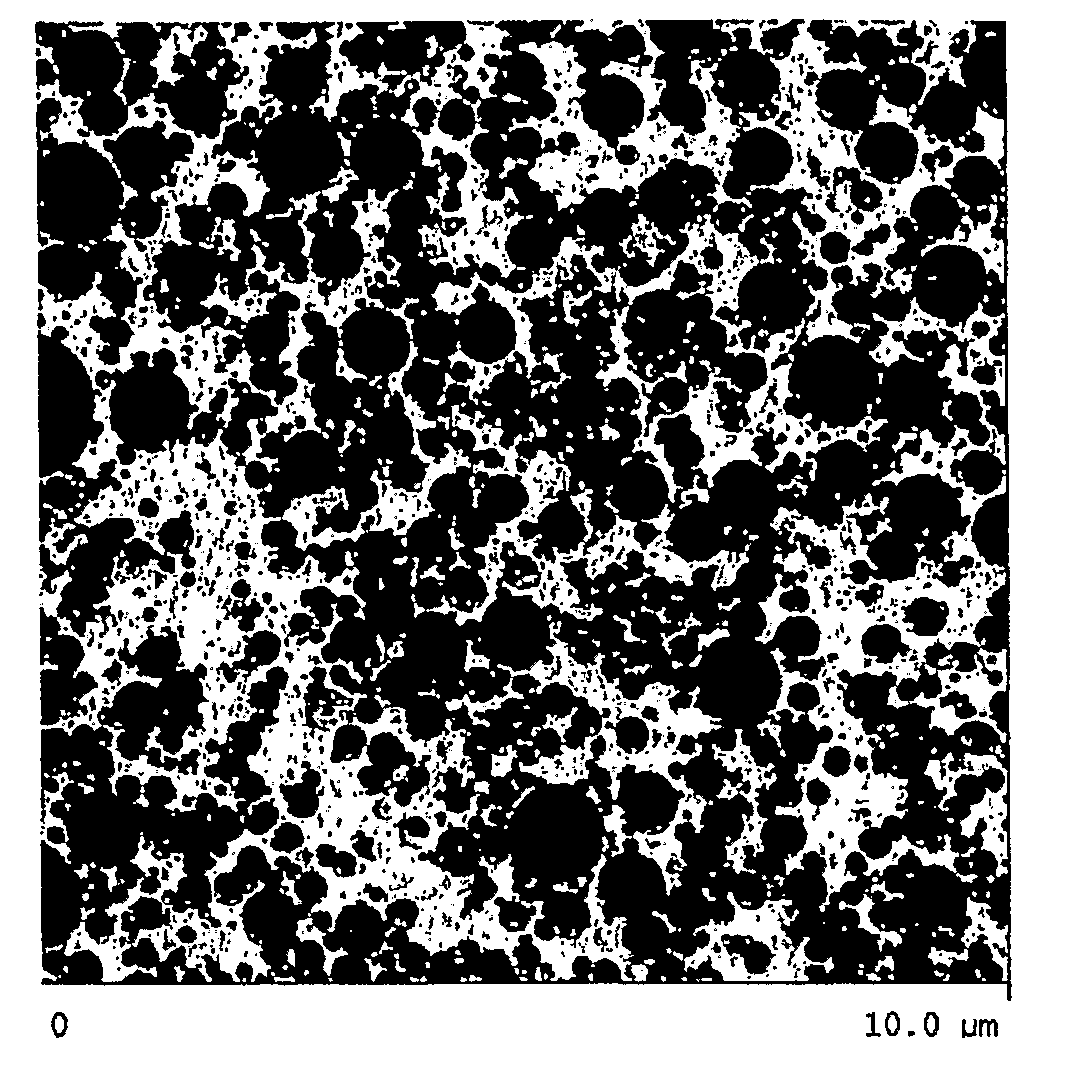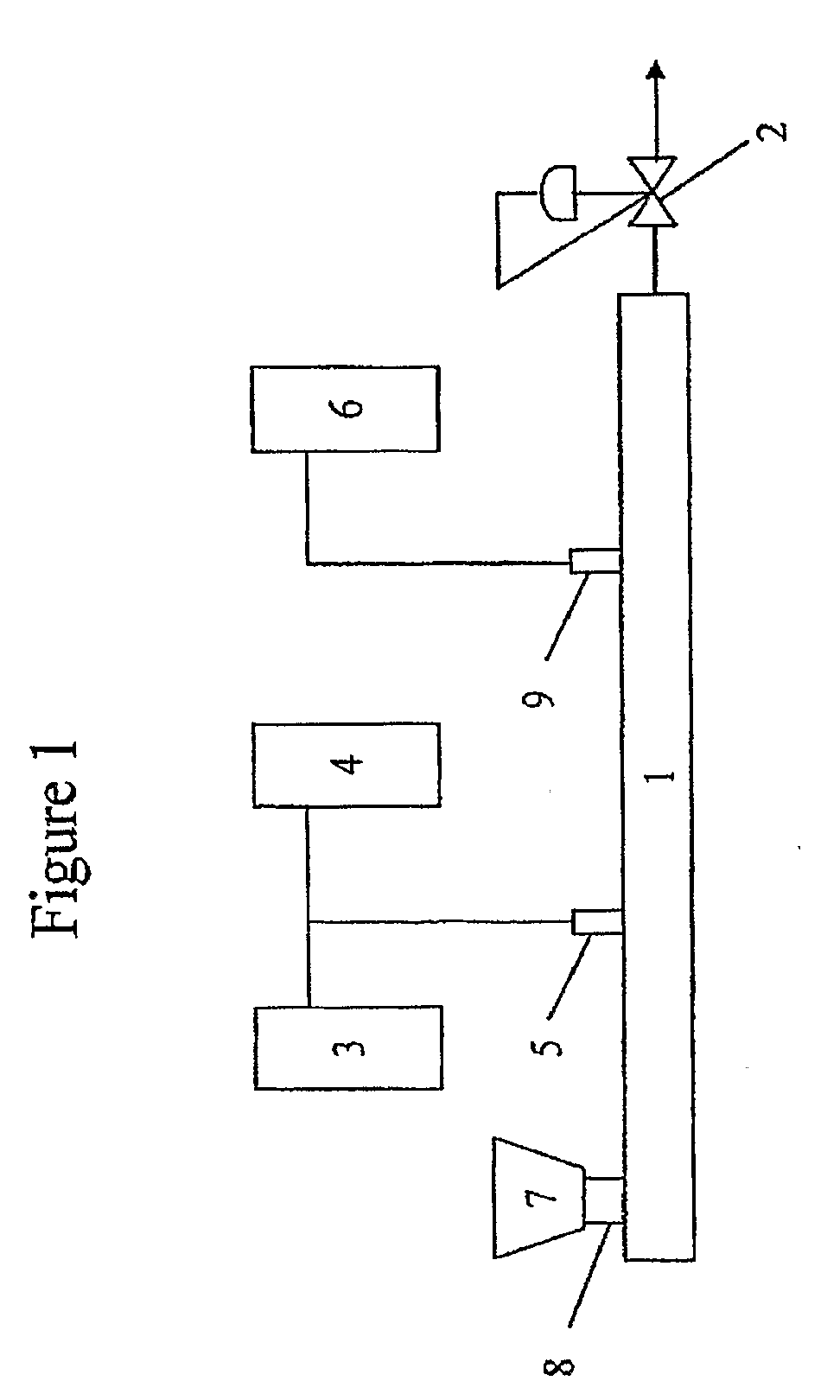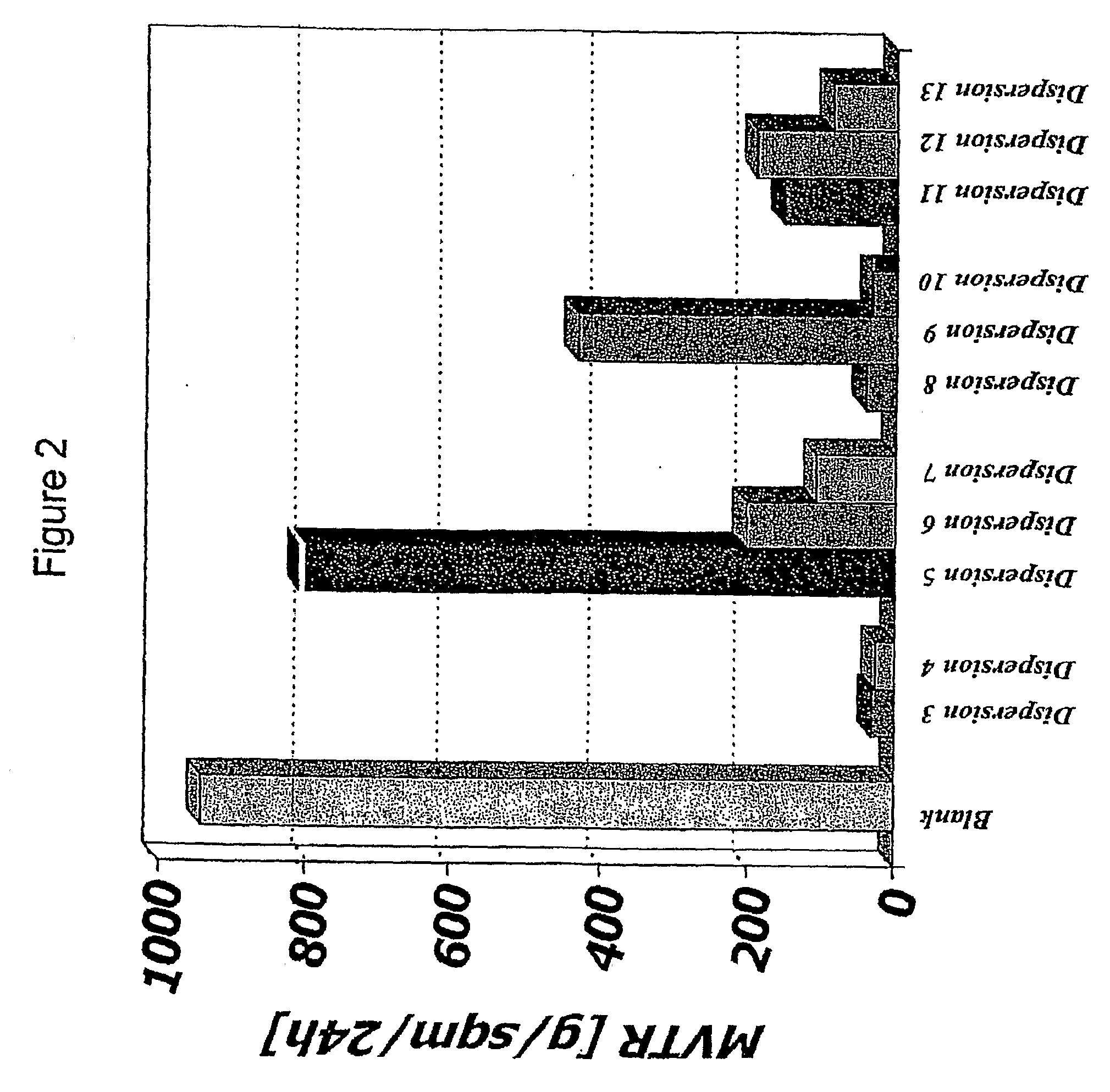Cellulose Articles Containing an Additve Composition
a technology of cellulose and composition, applied in the field of cellulose-based articles, can solve the problems of high coating thickness, adverse effects on other characteristics of products, and high coating thickness, and achieve the effects of improving water resistance, improving oil and grease resistance, and improving water resistan
- Summary
- Abstract
- Description
- Claims
- Application Information
AI Technical Summary
Benefits of technology
Problems solved by technology
Method used
Image
Examples
examples
[0161]Dispersion Formation: In each of the following examples which include dispersions, the dispersions were formed in accordance with the procedures as described in WO2005021638, incorporated herein by reference, and briefly described above with respect to FIG. 1.
[0162]Dispersion 1 was formed using an ethylene-octene copolymer and a surfactant system. The ethylene-octene copolymer used was AFFINITY™ EG 8200 plastomer (a copolymer available from The Dow Chemical Company having a density of about 0.87 g / cm3 (ASTM D-792) and a melt index of about 5 g / 10 min. as determined according to ASTM D1238 at 190° C. and 2.16 kg). The surfactant system used was a combination of UNICID™ 350 (a C26 carboxylic acid obtained from Baker-Petrolite, acid value 115 mg KOH / g) and AEROSOL™ OT-100 (a dioctyl sodium sulfosuccinate obtained from Cytec Industries). UNICID™ and AEROSOL™ were used at a loading of 3% and 1% by weight, respectively, based on the weight of EG 8200. An aqueous dispersion having a ...
PUM
| Property | Measurement | Unit |
|---|---|---|
| weight | aaaaa | aaaaa |
| thickness | aaaaa | aaaaa |
| thickness | aaaaa | aaaaa |
Abstract
Description
Claims
Application Information
 Login to View More
Login to View More - R&D
- Intellectual Property
- Life Sciences
- Materials
- Tech Scout
- Unparalleled Data Quality
- Higher Quality Content
- 60% Fewer Hallucinations
Browse by: Latest US Patents, China's latest patents, Technical Efficacy Thesaurus, Application Domain, Technology Topic, Popular Technical Reports.
© 2025 PatSnap. All rights reserved.Legal|Privacy policy|Modern Slavery Act Transparency Statement|Sitemap|About US| Contact US: help@patsnap.com



